Forget the tourist traps. This guide is your ticket to authentic Emirati cuisine, where every dish holds a story and the soul of the Emirates.
The world is used to looking up at Dubai, craning their necks toward its skyscrapers. But to truly understand this city, you need to look into its plates. It’s there, in the spicy aroma of cardamom, the sticky sweetness of dates, and the warmth of freshly baked flatbread, that its real history lies hidden—far older and deeper than the foundations of even the tallest buildings. It’s a story no guidebook will tell you, but one you can taste for yourself. This article is your gastronomic journey through time. We’ll start from the stark simplicity of a Bedouin campfire, where food was synonymous with survival, and move on to elegant restaurants proudly reviving forgotten recipes today. This guide will help you step off the beaten tourist paths, uncovering Dubai’s genuine, authentic flavors and gaining insight into its culture through the most essential element of all—food.
What is Emirati cuisine?: It’s a unique culinary phenomenon built on four pillars:
1. Gifts of the desert: At its core are honey-sweet dates as an energy source, nourishing camel milk, and resilient grains.
2. Aromas of the trade routes: Thanks to merchants from India and Persia, the cuisine acquired its signature warm notes of cardamom, saffron, turmeric, and cinnamon.
3. The Magic of Slow Cooking: Simmering meat and legumes for hours results in incredible tenderness and depth of flavor, with the meat literally falling apart into fibers.
4. A Culture of Hospitality: Food is not merely about satisfying hunger; it is a central element of communication, warmth, and the highest respect for the guest.
Roots of flavor: How bedouin and merchant cuisine was born
To understand the soul of Emirati cuisine, one must return to its origins—in the harsh sands of the Arabian Desert and the bustling docks of old Dubai, where the air was filled with the scents of spices and salty sea.
Food as survival: the legacy of the desert
For the nomadic Bedouin tribes, food was first and foremost a tool for survival. In conditions of extreme resource scarcity, every ingredient was valued like gold. Dates, thanks to their high caloric content and ability to be stored for months under the scorching sun, were the primary source of energy. Camel milk served as a daily nourishing drink, while meat was an extremely rare luxury. A camel or goat was slaughtered only on special occasions—for major celebrations or as a sign of the deepest respect toward an honored guest. This custom emphasized that hospitality was valued more highly than even the most precious resources.
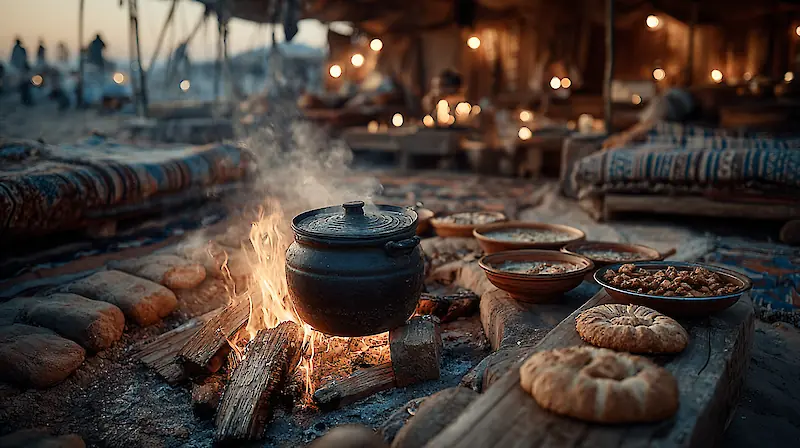
Scents of the trade routes
When Dubai transformed into a vibrant port city, its culinary world changed forever. Wooden dhow boats brought unseen treasures from India, Persia, and East Africa: snow-white rice and tightly packed sacks of aromatic spices. Cardamom, turmeric, saffron, and black pepper became symbols of prosperity, transforming the simple, time-tested cuisine of Bedouins into a complex and multifaceted culinary experience for wealthy merchants. It was during this era that the famous mahboos was born—a dish that perfectly illustrates this cultural synthesis. In it, melt-in-your-mouth lamb or chicken meat is immersed in golden rice infused with the aromas of cardamom, cloves, and dried lemons. Thus was created a rich, warming, and truly festive dish that today is considered a classic of Emirati cuisine.
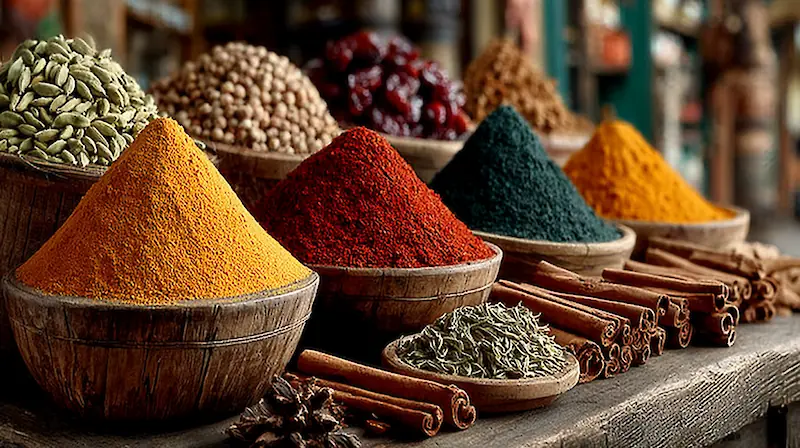
Tip: To experience the aroma of this era, head to the Spice Souk in Deira. It’s not just shopping—it’s a genuine immersion in history, where the air is thick with scents!
Lost and found: The revival of Dubai's national cuisine
The history of Emirati cuisine in the 20th century is full of drama. With the discovery of oil in the 1960s, Dubai began to change at a dizzying pace. A flood of expatriates from around the world poured into the city, bringing their culinary traditions with them. Restaurants offering Lebanese, Indian, Iranian, and European food quickly filled the streets, swiftly pushing local culinary traditions aside. A paradox has occurred: against the backdrop of economic prosperity, the national cuisine has found itself on the verge of disappearing. It has literally "hidden away" in the homes of Emirati families, becoming part of private life, celebrations, and family gatherings, yet simultaneously becoming almost invisible to tourists and even many city residents.
Remarkable fact: just 20-30 years ago, finding a restaurant in Dubai offering authentic Emirati cuisine was virtually impossible. The only way to taste it was as a guest of a local family—it had completely vanished from the public sphere.
Fortunately, in the early 2000s, its triumphant return began. Enthusiastic restaurants and cultural centers emerged, setting themselves the goal of bringing this national treasure back into the public space, transforming it into a source of pride and a unique experience for visitors to the emirate.
More than food: The cultural code of emirati hospitality
In the Emirates, food is a language of communication. Hospitality here is not merely a formality but a fundamental cultural value rooted in Bedouin heritage. Understanding its essence will enrich your experience and help you show respect for local traditions. The main rule is never to refuse an offered treat, as doing so could be seen as disrespectful. The cornerstone of this ritual is the serving of Arabic coffee (gahwa) and dates. This is the first and most important gesture of greeting, a sign of openness and friendliness that you will encounter everywhere—from the lobby of a five-star hotel to a government institution.
UNESCO heritage in your cup: Did you know that Arabic coffee "Gahwa" and the associated traditions of hospitality have been inscribed on the UNESCO Intangible Cultural Heritage List? The coffee pot "dallah" is not just tableware; it’s a national symbol of the UAE, embodying warmth and generosity.
Where to taste history: A guide to Dubai's best eateries
Today, experiencing authentic Emirati cuisine is easier than ever. Here are a few tried-and-tested spots, each offering its own unique way to explore the culinary heritage.
Al Fanar Restaurant & Café — a journey back to 1960s Dubai
Al Fanar is less of a restaurant and more of a time machine, transporting you to Dubai in the 1960s, before the oil boom and skyscrapers. The interior, with its wind towers barjeel, old photographs, and vintage furniture, meticulously recreates the atmosphere of a port town. And the menu here is a true culinary treasure trove, featuring those very classic dishes that the grandmothers of today's Emiratis used to prepare, such as tender harissa or fragrant lamb salona.
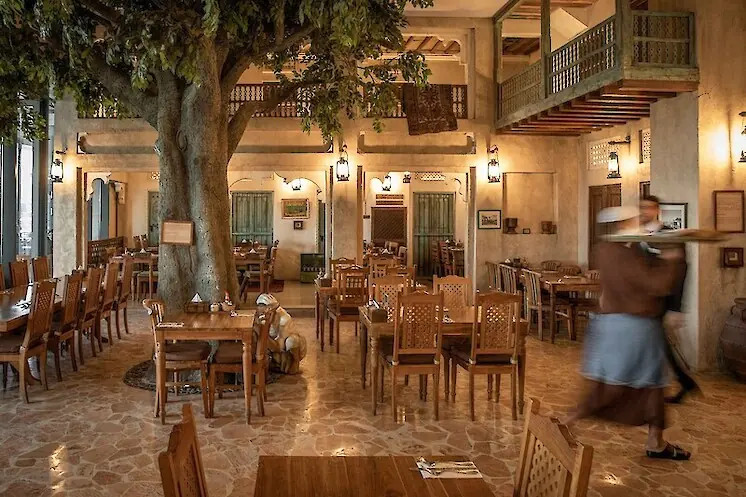
Al Khayma Heritage House — hospitality in a house-museum
Located in the historic Al Fahidi district, this center offers not just dinner, but a complete cultural immersion. Here, sitting on soft cushions in the courtyard under the aroma of smoldering incense, you don't just eat—you become a guest in a genuine Emirati home. You'll not only get to taste authentic dishes, but also see how local families lived, learn about traditional crafts, and experience the unhurried rhythm of old Arabia.
Seven Sands — a modern take on tradition
This restaurant proves that traditional cuisine can be not only authentic but also exquisite. Seven Sands carefully reinterprets classic Emirati recipes, giving them a modern twist and elegant presentation. Imagine a classic camel kebab, served not just with rice, but as tender sliders in a potato bun, or the luqaimat dessert transformed into an elegant parfait. This is the place for those who want to be surprised by familiar flavors.
SMCCU — lunch as a cultural dialogue
The Sheikh Mohammed Centre for Cultural Understanding (SMCCU) offers perhaps the most honest lunch in Dubai. Here, food becomes an occasion for open dialogue. You sit on cushions on the floor together with a local resident, and over a plate of fragrant mahboos, you can ask absolutely any questions about culture, traditions, and life in the UAE. The center's motto—“Open doors, open minds”—is literally felt here.
How to choose the perfect spot for yourself?
- For nostalgic foodies: Your choice is Al Fanar, if you want to dine in the atmosphere of old Dubai and try canonical recipes.
- For those craving immersion: Head to Al Khayma if your goal is not just dinner, but a lively cultural lesson with interactive elements.
- For lovers of elegance: Book a table at Seven Sands if you want to see how traditional flavors can sound refined and modern.
- For curious conversationalists: Go to SMCCU if for you lunch is the best occasion for an open conversation and meeting local residents.
Planning your culinary journey in Dubai
Ready to embark on a quest for Dubai's flavors? Here are some practical tips.
How to find authentic Emirati cuisine?
- Cultural centers: Al Khayma Heritage House, SMCCU—for a deep dive into history and daily life.
- Authentic restaurants: Al Fanar, Seven Sands—for a comfortable and delicious introduction to the classics.
- Markets: Spice Souk (Spice Market) and Deira Fish Market (Fish Market in Deira)—for independent adventurers eager to see the ingredients with their own eyes.
- Festivals: Dubai Food Festival — for those who want to experience the full diversity of local gastronomy, from street food to haute cuisine, all in one place.
Budget and prices
Costs can vary significantly: from relatively inexpensive meals at cultural centers (approximately $$) to a full dinner at a restaurant like Seven Sands (from $$$). Keep in mind that prices in dynamic Dubai can change, so it’s wise to check the website of your preferred venue or call them before visiting to confirm current pricing and make a reservation.
Table manners: how to be the perfect guest
Etiquette tips: Always accept an offering, even if only symbolically. If you’re served coffee, accept at least one cup. Remember that the right hand is considered "clean" and is used for eating and greeting. And don’t be surprised if your host offers you the best piece—it’s a sign of the highest respect!
Best time to visit
The most comfortable time for culinary exploration is during the cooler months from October to April. During this period, it’s pleasant to stroll through markets and sit on outdoor restaurant terraces. Also, keep an eye on the dates of the annual Dubai Food Festival. The dates change each year, so it’s best to check the official Dubai tourism portal for up-to-date information.
The taste of the future born in the past
Emirati cuisine is Dubai’s living history served on a plate. It has traveled an incredible journey, transforming from a pragmatic tool for survival in the desert into a vibrant symbol of national pride in one of the world's most modern cities. And this story doesn't end here. Today, Dubai is giving rise to a new trend—“high Emirati cuisine,” where talented chefs are reimagining age-old recipes, proving that tradition doesn’t stand still but continues to evolve.
Next time you find yourself in Dubai, don’t limit yourself to the standard tourist itinerary. Set out in search of its true flavor. Let the aromas of spices and the warmth of Arabian hospitality tell you a story you won’t find in any guidebook. Taste it for yourself—and you’ll realize that Dubai’s true soul lies not in the dizzying heights of its towers, but in the comforting depth of its flavors.
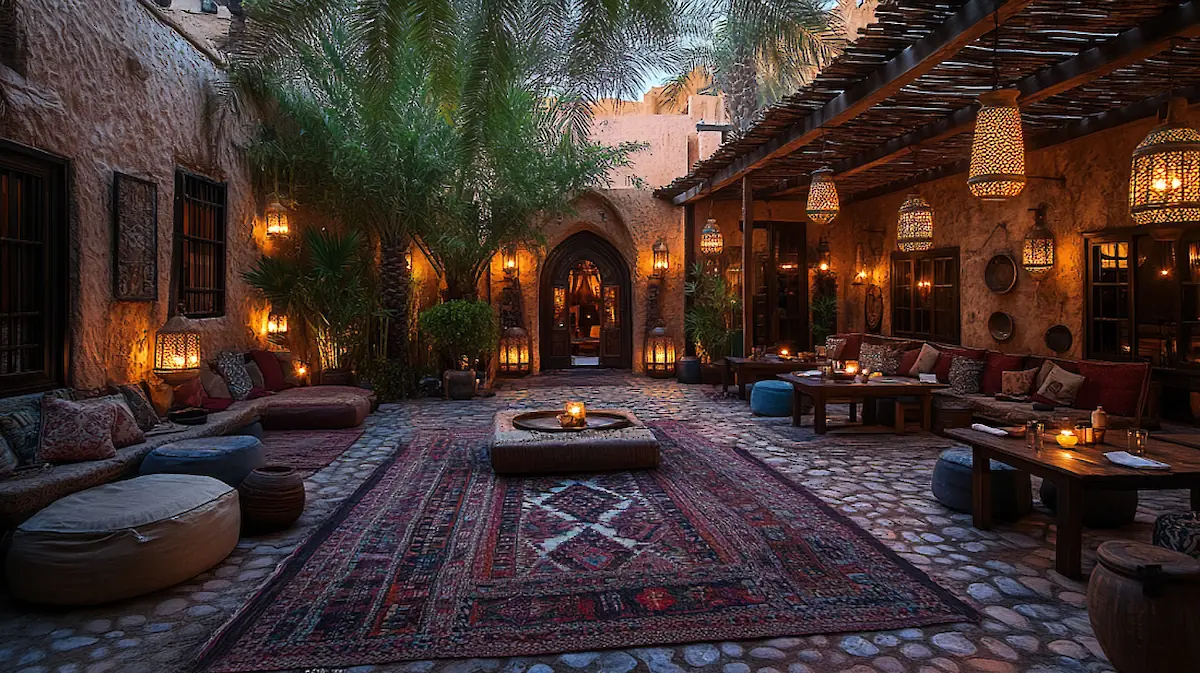







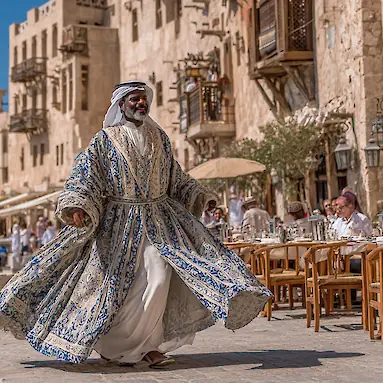










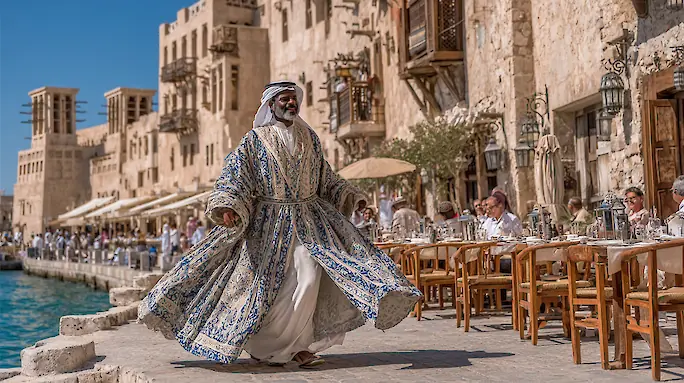



Comments